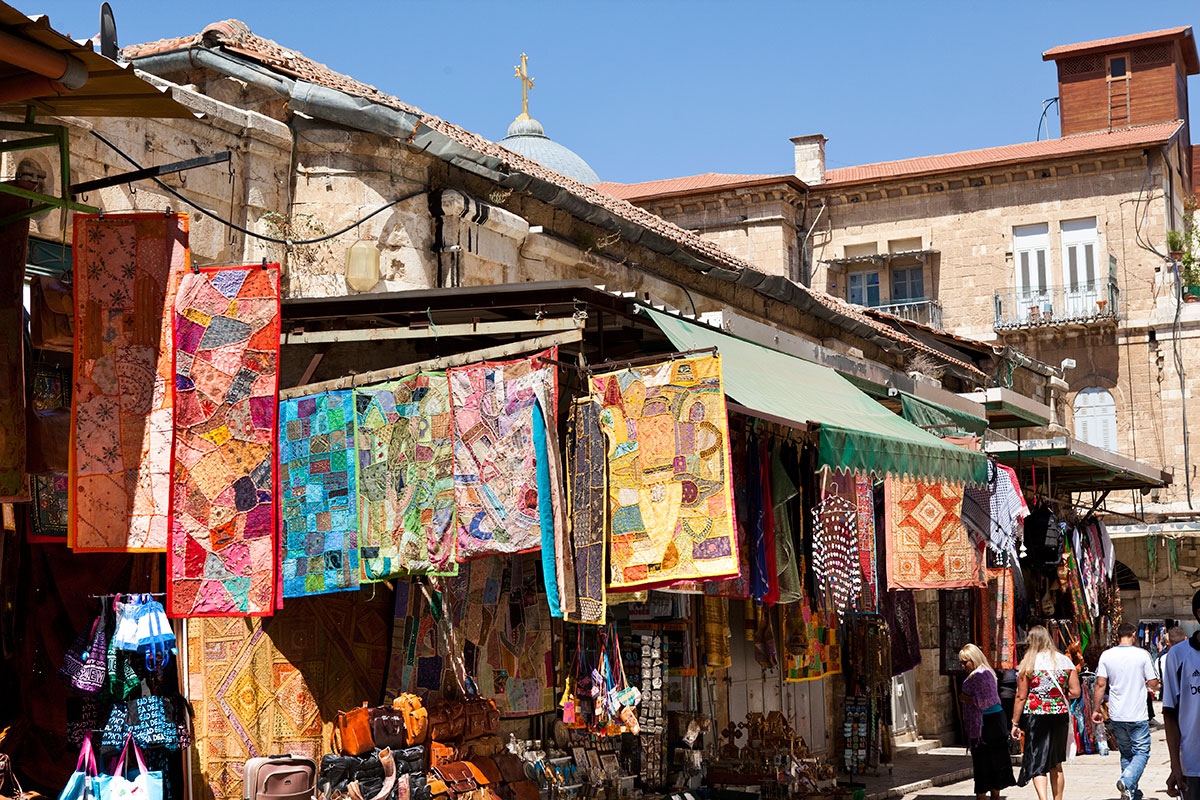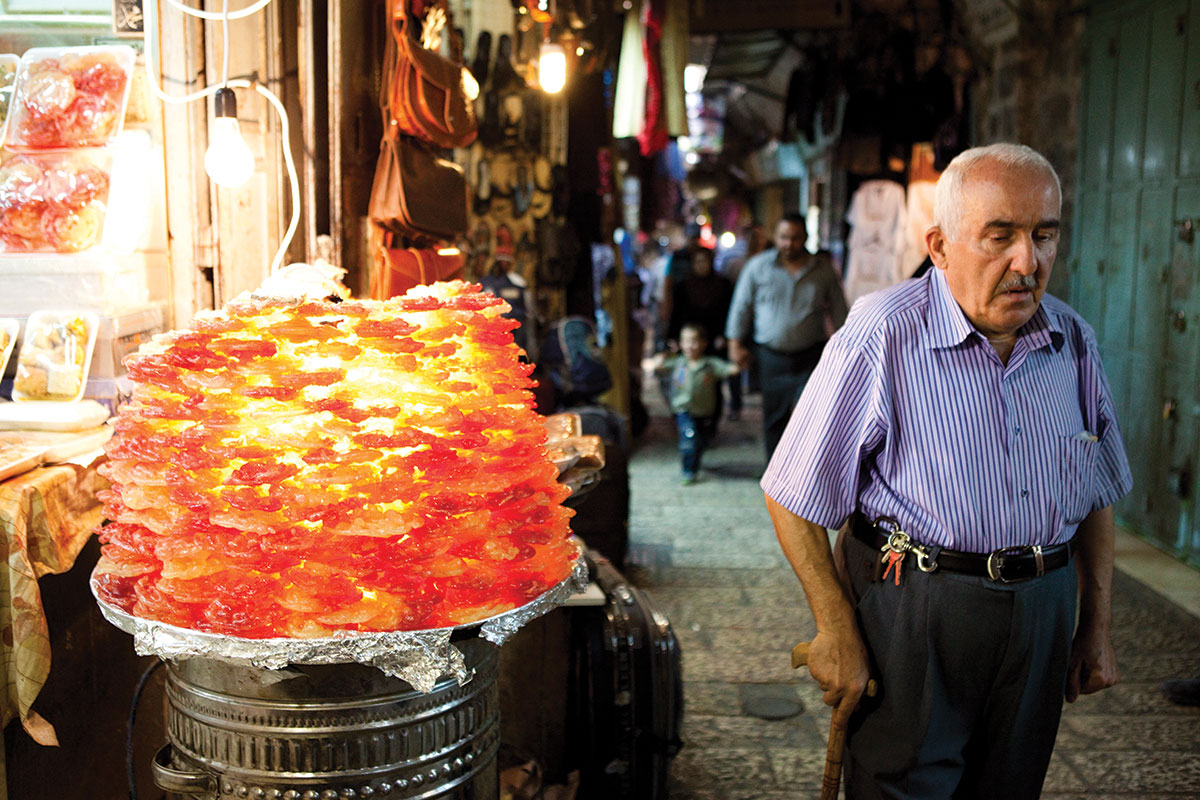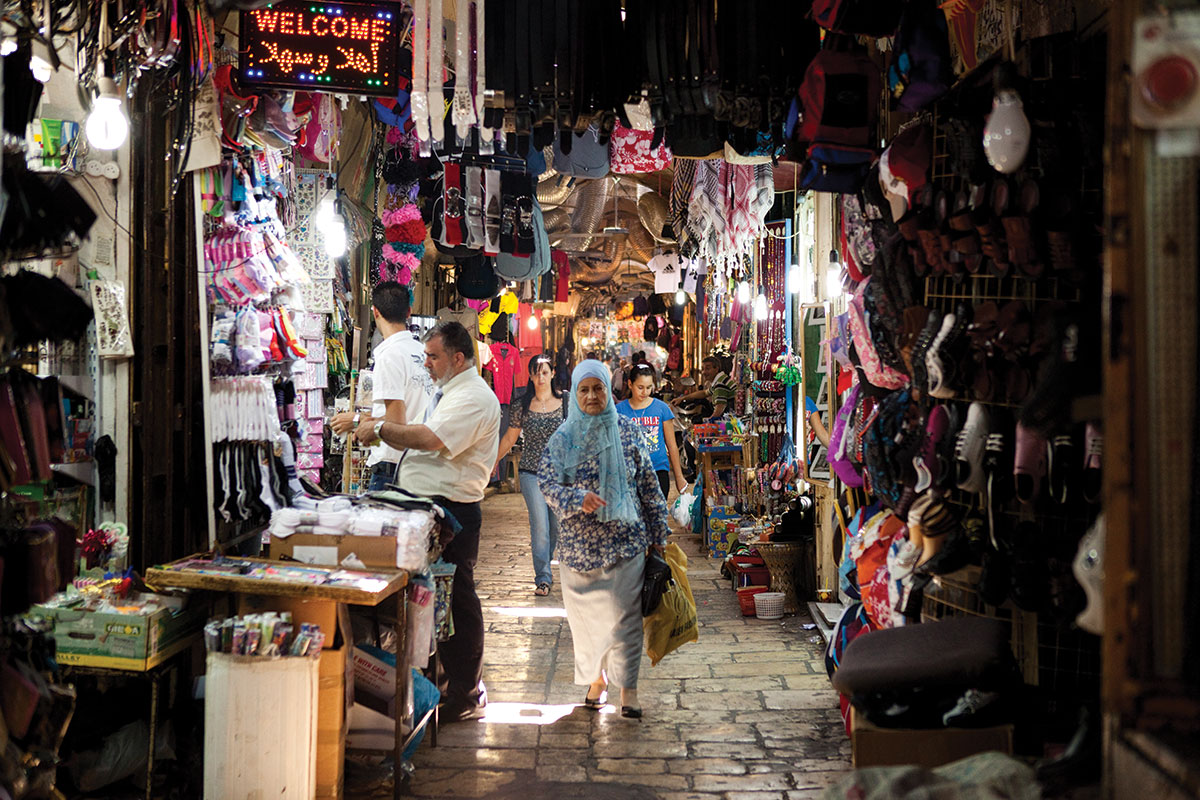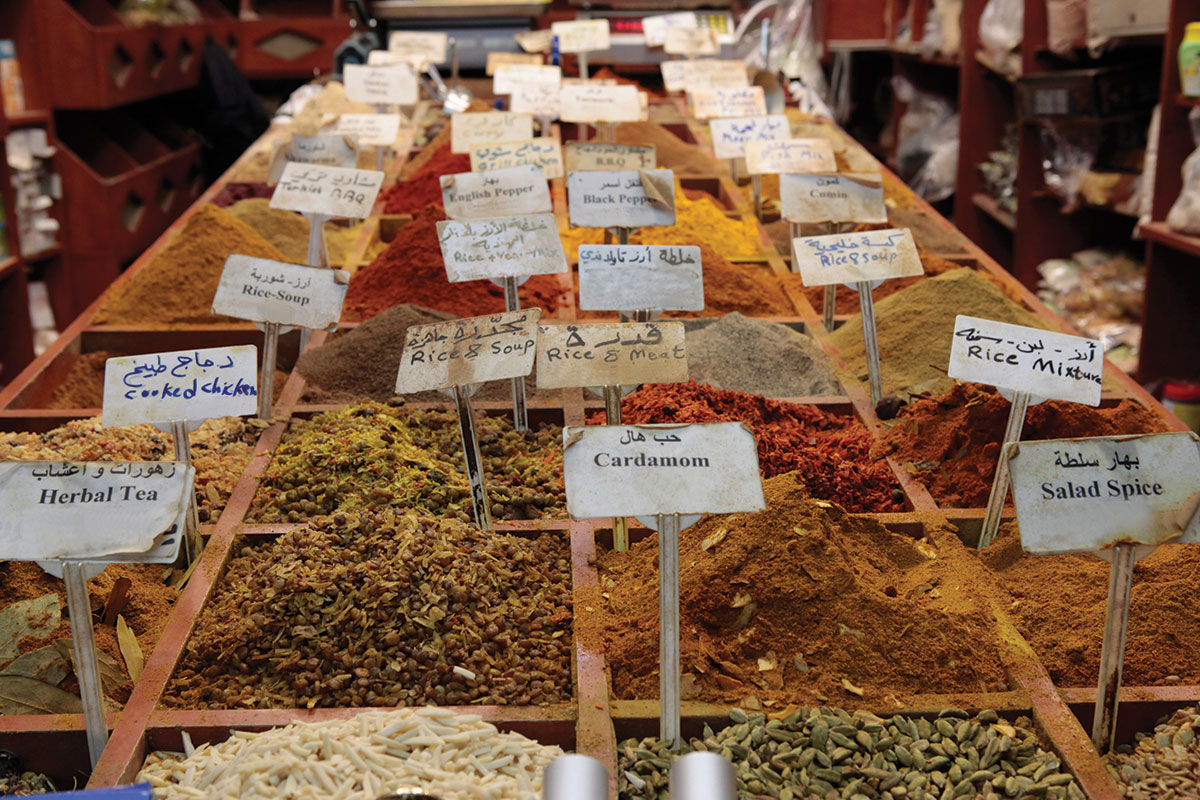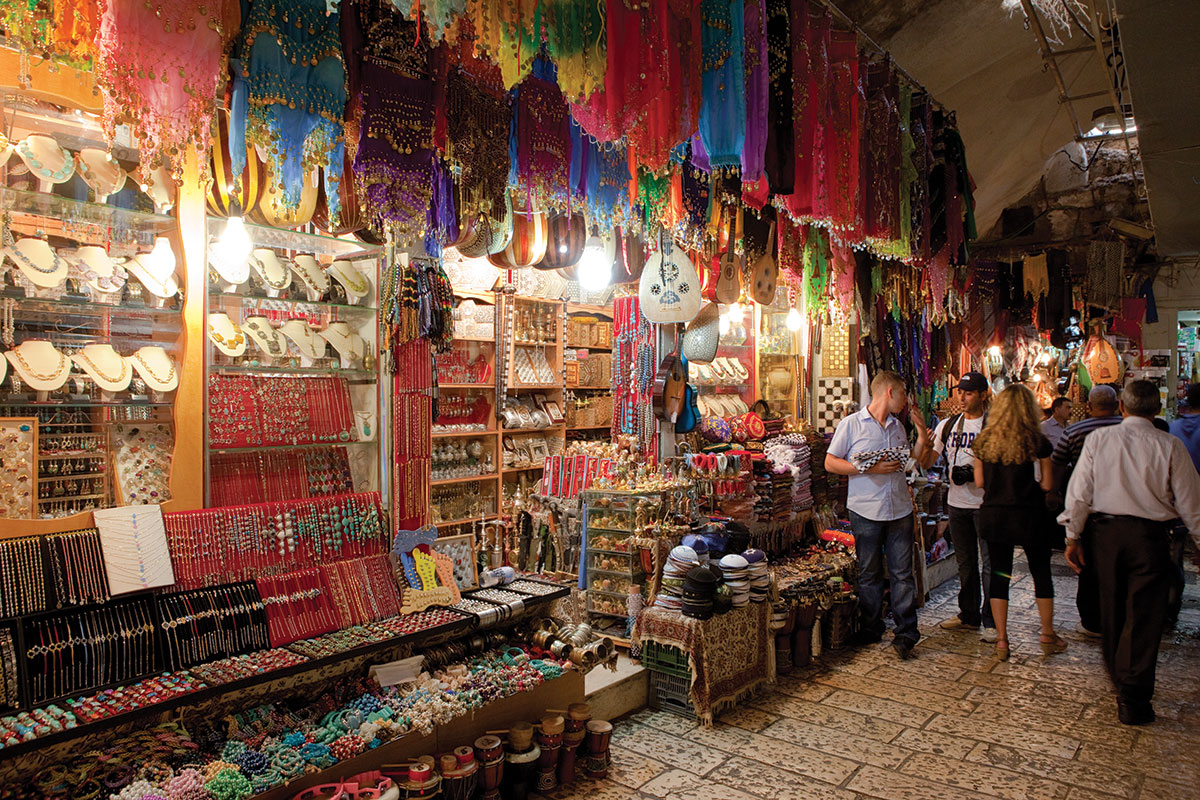Jerusalem, the sacred and commercial city, has always been renowned for its markets (souqs). The souqs are the assemblies of small shops that follow the Old City’s alleys or are set up at street crossings. In these markets in the past, professional specialization was the rule that made merchants of the same profession gather in particular areas of the city. This practice led to the naming of specific markets according to various categories, and the names can usually be seen above or next to their entrances.
A stroll through the markets of Jerusalem is an incredible experience of fragrances, tastes, sights, and sounds. The narrow streets and alleys are filled with shops that sell various kinds of traditional handmade crafts, garments, ceramics, or glass items for every taste and budget. Many small restaurants and stands offer delicious meals, fresh juices, freshly ground coffee, or Middle Eastern sweets.
Just behind Damascus Gate is located one of the busiest and colorful shopping streets of the Old City – Souq Khan al-Zeit (Caravanserai of Oil), which leads all the way to the Via Dolorosa and the area of the Church of the Holy Sepulcher. Although it is said that the major markets of Jerusalem have been located in this area since Roman times, most of the shops that we can see now were built during the Mamluk era. The first part of this souq is uncovered, but farther down one can see its stone roof, composed of a sequence of cross-vault lintels, in the middle of which are great openings that let in air and light.
The name of Souq Khan al-Zeit indicates that in the past it was famous for shops that sold olive oil and factories that produced olive oil soap. Today, however, the shops contain a wide variety of goods. The bustling street is full of confectionery and nut shops, souvenir shops, falafel and vegetable stands, butcheries, and restaurants.
Just behind the Holy Sepulcher (southern side) can be found one of the most recently established markets of Jerusalem. Souq Aftimos and al-Dabbagha (The Tanners’ Market) were established at the beginning of the twentieth century by the Greek Orthodox Patriarchate. Today, this lively street offers various shops that sell leather products and beautiful souvenirs from Jerusalem. Traditional restaurants abound, offering rooftop dining with stunning views on the surrounding Old City.
In the middle of Jerusalem’s Old City can be found a complex of three adjacent souqs, with their present form dating back to the Mamluk and Ottoman periods. These three streets are roofed with arched vaults that are open in the center. The street in the middle is called Souq al-Attarin, which until recent times specialized in oriental fragrances and spices. Currently, however, there are only a few shops along the souq that have kept that old tradition. To the west can be found Suq al-Lahhamin (The Butchers’ Market), which consists of a large number of shops that sell meat and vegetables. In the recent past the souq was referred to as Souq al-Nahhasin (The Coppersmiths’ Market), where traditional handmade copper items were sold. The eastern section of the complex used to be a goldsmiths’ market known as Souq al-Khawajat. At present, only the southern part of the street is open, where merchants sell mainly carpets and textiles.
Finally, one reaches Souq al-Qattanin (The Cotton Market), which leads to one of the western entrances to Al-Haram al-Sharif or The Noble Sanctuary complex. Its name dates back to the fifteenth century when it was known for selling cotton and its derivatives. The area can be reached by following Al-Wad Street from Damascus Gate. The shops line both sides of the wide street. The central part of the market contains a Mamluk caravanserai called Khan Tankaz, which contains two beautifully restored non-functioning hammams (public baths) that are accessible to visitors. The inn was established in the fourteenth century to host mystics and pilgrims who desired accommodations close to the Haram. At the end of the souq can be found a beautiful portal that leads up to Al-Aqsa Mosque and the Dome of the Rock. The door is passable only for Muslims. Non-Muslim visitors can access the area of the Haram from the Mughrabi (Moroccan) Gate.
To learn more about Jerusalem, visit our website at www.visitpalestine.ps, or contact the Visit Palestine Information Center in Bethlehem via info@visitpalestine.ps or (02) 277-1992.

